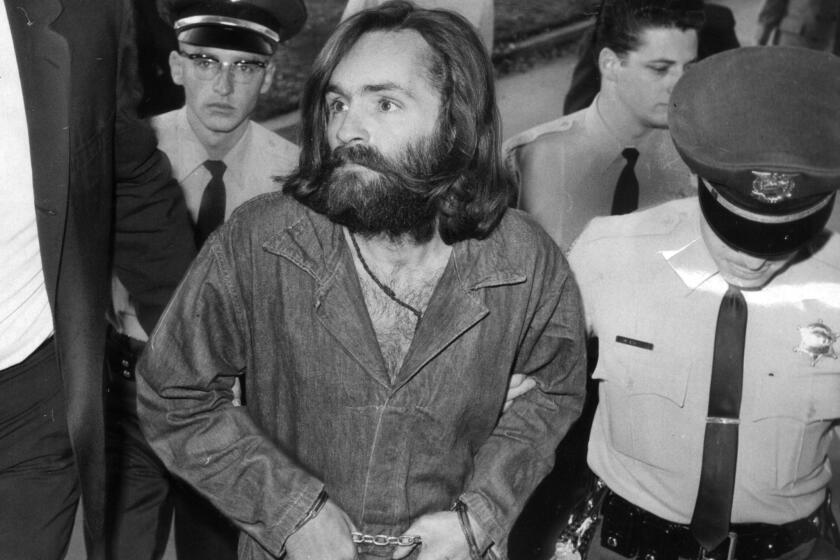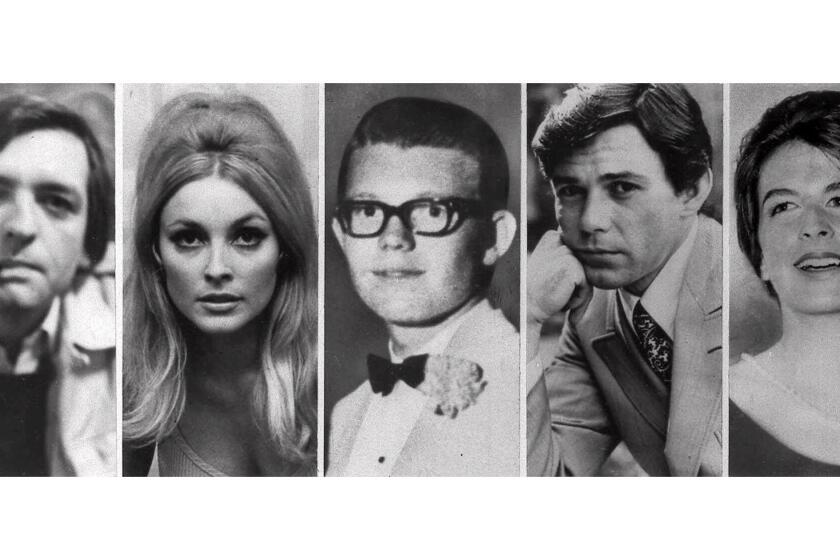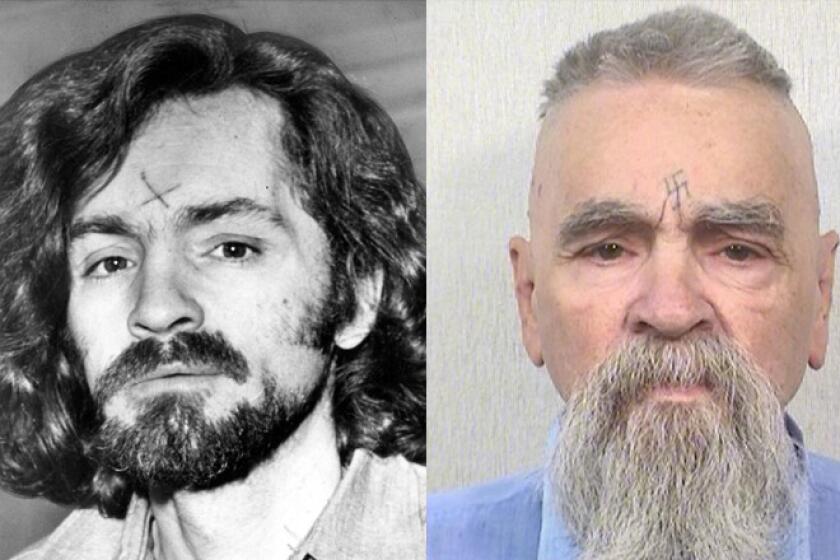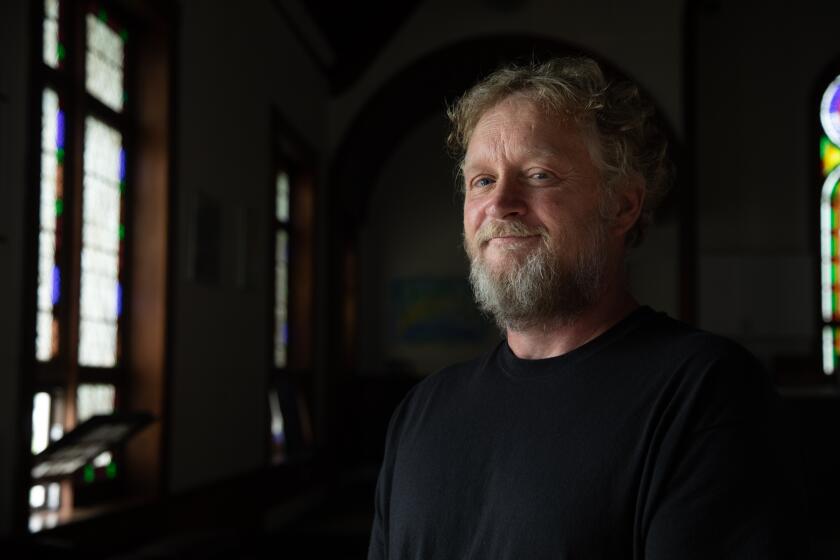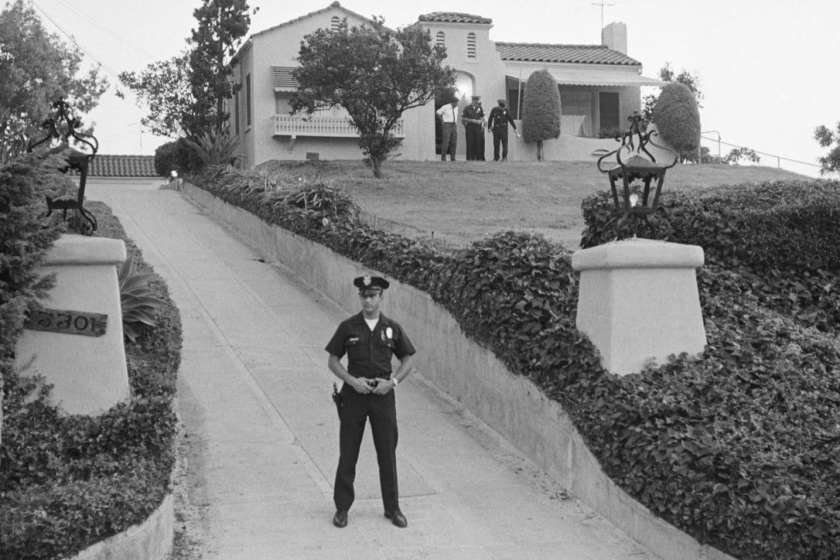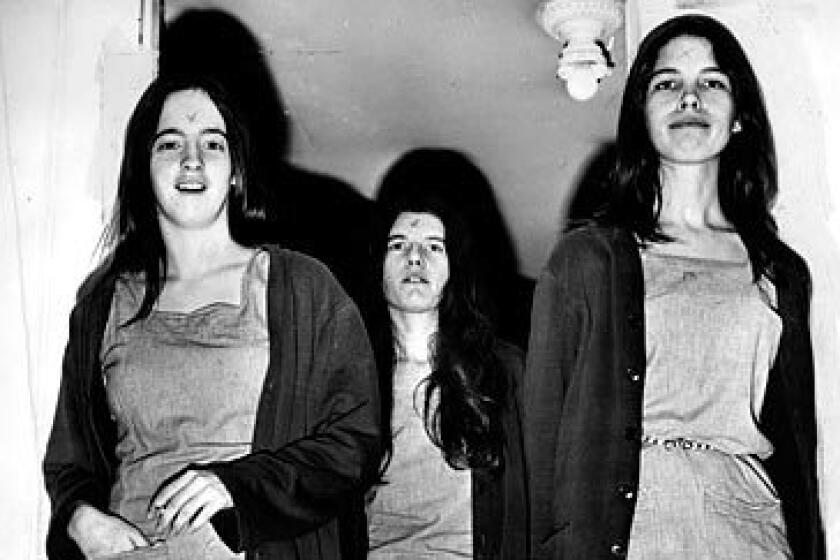How Charles Manson cast his spell on homecoming queens, honor students and dropouts
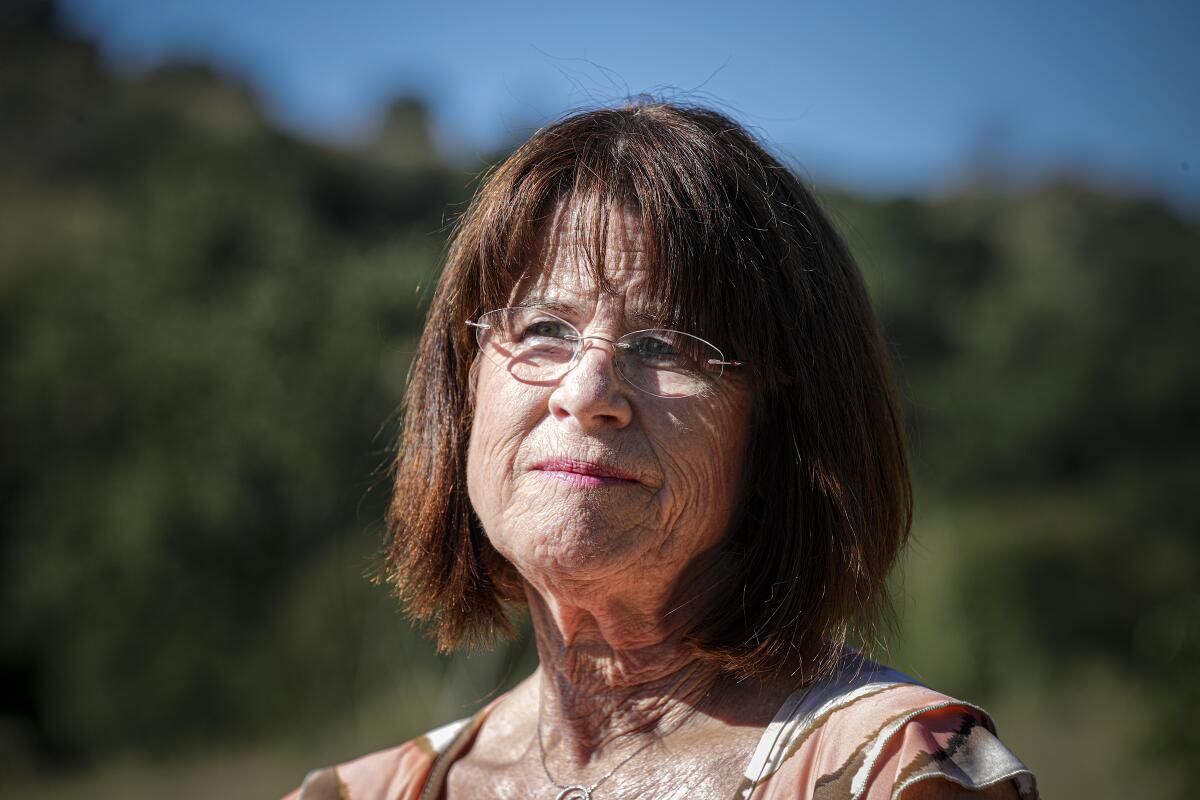
She was a suburban mother of three, married for 30 years, with a ski boat and a lake house. She sang in the church choir, volunteered at summer Bible camp and took family road trips to Yosemite and Zion.
In January 2008, a phone call snapped her back to a time sheâd spent nearly 40 years trying to forget.
For the record:
4:50 p.m. July 14, 2023This article states that Leslie Van Houten was a former homecoming queen. She was a homecoming princess her freshman year at Monrovia High School.
âIs this Dianne Lake?â a man asked.
The words drilled a pit in her gut. No one used her maiden name. She made sure of it.
Her hands began to sweat. The man explained how he was part of a forensic team planning to exhume bodies in the desert, how her name might end up in the news.
She begged him to keep her out of it, but he said he could not. âYou were part of something bigger than you are,â he told her.
Sheâd thought sheâd escaped this reckoning. Her husband knew her secret. But now sheâd have to tell her friends, her employer, her children.
A week after the call, Lake stepped into her oldest childâs bedroom and sat on the mattress.
âThere is something Iâve dreaded ever having to tell you,â she said. Her 22-year-old daughter looked up, startled. âRemember when I told you how your grandparents became hippies and lived in a bread truck when I was 14?â
âYeah.â
There was another part to the story. âWell, I met a man named Charles Manson.â
***
In 1967, Lake became Mansonâs youngest follower, nicknamed Snake. She was 14 years old and lived with him for more than two years, squatting at the Spahn Ranch near Chatsworth and stocking up for the apocalypse in a Mars-like valley of the Panamint Mountains.
Lake, now 66, is part of the great enigma that has inspired half a century of unrelenting fascination with the Manson murders: how honor students, choir girls, junior college dropouts and homecoming queens lost themselves so catastrophically to the spell of a slightly-built, uneducated ex-con from West Virginia.

The butchery of seven people in August 1969 â Sharon Tate, Jay Sebring, Abigail Folger, Voytek Frykowski, Steven Parent and Leno and Rosemary LaBianca â in the most rarefied reaches of what the world saw as La-La Land, was bound to cause an international spectacle, forever gilded by the bizarre antics and rantings of its raggedy mastermind.
But the Manson âgirlsâ â many of them just two or three years gone from family dinner tables â drove a chill deep into the nationâs psyche that is yet to lift.
Half a century later, we know their stories from countless newspaper reports, television interviews, and documentaries, court transcripts and dozens of memoirs and true-crime books, from Ed Sandersâ âThe Familyâ in 1971, to Vincent Bugliosiâs seminal âHelter Skelterâ in 1974, to Jeff Guinnâs âManson: The Life and Times of Charles Mansonâ in 2013.
The woman most willing to partake in the bloodshed, Susan Atkins, died in prison in 2009 after 40 years behind bars. Leslie Van Houten and Patricia Krenwinkel, who were also convicted on murder charges, are still there, as is Charles âTexâ Watson, and two other men.
Other inner-circle members of the Manson âfamilyâ did shorter terms for different crimes and managed to quietly slip back into the world.
In and out of prison, most of them would publicly renounce Manson after years of therapy or church or both. They depict him as a con man, or a madman, or the epitome of evil. (To a hardened core of true believers, he is still the messiah he proclaimed to be.)
But the underpinnings of the group were never so grandiose. They were about broken families, loneliness, post-adolescent uncertainty about what lay ahead.
***
Mary Brunner, a 23-year-old history major from Eau Claire, Wis., was the first disciple. She worked at the library at UC Berkeley and dressed conservatively. There was nothing radical about her. Her mother was a nurse and her father owned a sporting goods store.
Manson had just been released from prison on Terminal Island in March 1967. He was aimless, with no close family members or friends to speak of, and came to Berkeley looking for a fellow parolee.
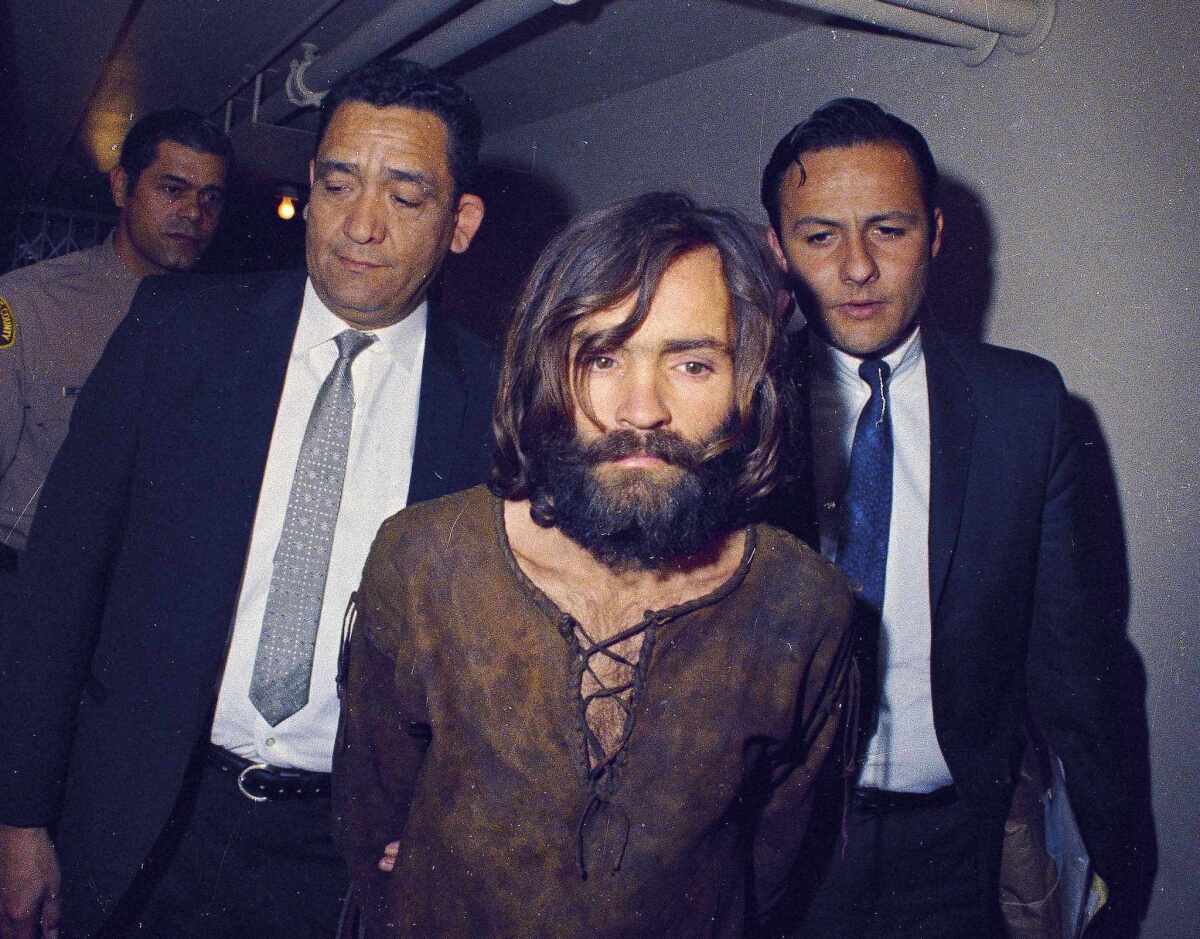
Playing guitar at Sather Gate on campus, he saw Brunner walking her poodle in a high-button blouse. He fussed over the dog, struck up a conversation, played her some songs and casually mentioned he had no place to live, according to Bugliosiâs âHelter Skelter.â
Brunner was plain-looking, reserved â and lonely. She made Manson stay on her couch for a few nights, but eventually let him into her bedroom. She relished the affection he showed her.
Manson, 32, had studied mind-control techniques in prison, read about Scientology and Dale Carnegie, and thought he could become a pimp when he got out. He zeroed in on young womenâs vulnerabilities â a distant father, a lack of confidence in their looks, naivete about the world at large. Many of his would-be followers were simply lost in the cultural upheaval of the time, unsure what to think or where to go.
He provided answers.
Brunner became his girlfriend and meal ticket, even as he brought other women into his circle. He crossed the San Francisco Bay to check in with his parole officer and, strolling through the Haight-Ashbury district, found the flower children in full bloom.
Manson wouldnât give up on being a pimp, but in this era of free love, heâd dress the role up in mystic garb to fit the times â and use it for different means. His goal since prison was to become a musician and truth-teller as famous as the Beatles.
He saw himself moving to Los Angeles, the commercial center of folk rock, making trips down Highway 101 to scout out the scene. In May 1967, he met an 18-year-old girl crying on a bus bench in Venice Beach on a damp day.
Lynette Fromme had clashed with her strict father, an aerospace engineer, over the direction of her life. She had been voted âpersonality plusâ in high school and was part of a professional dance team, the Westchester Lariats, which toured the U.S. and Europe and appeared on âThe Lawrence Welk Showâ in the 1950s. She was attending El Camino College but had started using drugs and having sex.
In her 2016 memoir, âReflexion,â Fromme wrote that she told Manson she felt trapped in a life she was supposed to live.
âThe way out of that room is not through the door,â he told her. âDonât want out, and youâre free. The want ties you up. Be where you are.â
She got in his borrowed 1948 Ford truck and never turned back.
That summer, Manson returned to Southern California in a Volkswagen bus to see a friend from prison. At a party in Manhattan Beach, he met 19-year-old Patricia Krenwinkel, who was working a stultifying job at the Insurance Company of North America. When she agreed to let him stay at her apartment for a few days, he zeroed in on her as he had with Brunner.
During a 2016 parole hearing, Krenwinkel recalled Manson saying, âI can see that youâre not, youâre not happy.â
Krenwinkel described herself as âimmature,â adding: âNot knowing how to handle the situation I was in, it sounded like he knew what he was doing. He was, you know, he was the adult in this. He was 33. I was 19.â
âI felt totally in over my head by the time I met him. ... I didnât see any other way out,â she said to the parole board, according to transcripts.
Krenwinkel was self-conscious about her weight and an endocrine condition that caused excess body hair. Manson told her she was beautiful and he loved her. He urged her to drop her inhibitions. They had sex.
Read our full coverage of the Manson murders.
âMaybe heâs the one I can eventually settle down with,â she thought.
She left with him in the bus, thinking she had a new boyfriend, only to meet Brunner and Fromme in San Francisco.
And so the family grew. Many came and went, and the girls who stayed had to submit to sex at his whim, often just after meeting him. In due time, anyone who disobeyed him or challenged his dogma, however delicately, risked beatings or banishment.
But even with those clear signs of Mansonâs dark interior, the first year of the familyâs short existence didnât have the mythic evil that would come to define it. The women ignored his lashing out, his forcing them to sexually service other men. They were like overgrown, abused children, getting cast-off food from dumpsters, singing songs, making love, dropping acid to make the vision cohere.
âI have a lot of good memories about Spahn Ranch,â Lake says, on a recent visit to the site of the old movie ranch where they filmed westerns, which is now part of a state park.
âIt was just a wonderfully natural place,â she recalls. âThereâs a creek just below us here and we used to spend time down there. ... I remember getting high here and wandering through the hills, and I rode a white horse here.â
Even now, she tries to forget him whipping her with an extension cord or sodomizing her violently against her will in an old gypsy caravan movie prop. She still uses the term âmaking loveâ when talking of her other sexual encounters with Manson. She concedes that itâs less painful to talk about this from her youthful, 1960s perspective, rather than her current mind-set â even though, on a rational level, she knows he was preying on an underage girl.
âGoing back into my innocence is a level of protection,â she says.
Lakeâs trajectory to Manson was a tragic one, recounted in her harrowing 2017 memoir âMember of the Family.â
Until she was 12, she was raised in and around Minneapolis, the oldest of three children, with a restless father hardened by the Korean War and a mother who would do anything to accommodate him. Clarence Lake found inspiration in Jack Kerouac and the Beats and wanted to move to California to study art. He felt trapped as a house painter.
Clarence abandoned the family and moved to California in the summer of 1963, but they rejoined him in Santa Monica in 1965, where they lived a relatively normal life for two years. Lake went to the beach, pored through copies of Seventeen magazine, and shopped on Third Street with her best friends, twins named Jan and Joan.
But her parents started smoking marijuana and gravitated into the counterculture movement. They bought a bread truck, packed up and took to the road for good, bouncing around campgrounds and communes, meeting other hippie travelers and taking psychedelic drugs.
âI had an acid trip where I thought I heard God telling me it was time to leave home,â Lake recalls. âSo, I told my parents about it and they wrote me a note, emancipating me as a minor, and I lived with this couple we met at Zuma Beach.â
Charles Manson and his âfamilyâ committed heinous crimes across Los Angeles in 1969. Here is a timeline of what led up to the murders and the aftermath.
âMy mom and my dad thought, with this new way of thinking, [that] I was old enough to be on my own, even though society said no.â
She was 14, dropping acid, exploring her sexuality, and trying to act like an adult.
But she was lonely and felt her parents were pulling away. They had moved into the Hog Farm commune in Tujunga, where the leader didnât want any underage, sexually active teenagers hanging around for fear of a police bust. She longed to be back at the dinner table with her parents and brother and sister in Santa Monica.
Instead, Lake stayed with a new couple, speed addicts, Richard and Allegra, not far from Tujunga. âHey, Chicken Little, we want you to meet someone groovy,â Richard announced one night in November 1967. They took her to a party at an abandoned house at the mouth of Topanga Canyon.
âWhen I went up the stairs, the girls came running out, saying, âCharlie, Charlie, itâs Dianne. Sheâs here!â â
She couldnât believe it. The warm greeting felt magical. How did they know her?
âSo this is Dianne,â Manson said and gave her a long hug. She teared up at the embrace. âOh youâre beautiful,â he said. âIâve been looking for you.â
Lake later found out that her parents had traveled with the Manson family and told them to look out for her.
The families of Sharon Tate and other victims of Charles Mansonâs âfamilyâ want to make sure their loved ones arenât forgotten.
Manson gave her a sip of his root beer and told her to sit in a circle as he played songs and told funny stories. âDianne is home,â he sang.
Manson was impish and played little hand games with her. He invited her into the familyâs converted school bus and, in her words, âmade love to me in a very wonderful way that made me feel very accepted, like a woman, not like a little kid.â
***
When she moved into the familyâs converted school bus four weeks later, she joined in on the increasingly ritual LSD trips with Charlie talking and singing. âThink about my name and you will understand your purpose. I am Manson, man son, manâs son.â
But when they journeyed up the state and through the Southwest, she got her first glimpse of a different side of him. One day in New Mexico, she recalls, he was nursing a toothache with ice and looked unhappy.
âCan I help you with anything?â she asked him. âDo you want any food?â
He slapped her hard across the face.
âDo I look like I want any food?â
Sheâd start to monitor his volatile moods.
***
In Topanga one afternoon, Manson was preaching and singing to an audience next to the Fernwood Market when Lake spotted her friends from Santa Monica, Jan and Joan. She turned around, excited. âHow did you find me?â
They had heard she was living in an abandoned house with Manson and his crew and had come to rescue her, she recalls.
Followers of Charles Manson were tied to the deaths of nine people in the summer of 1969.
The guitar halted. Lake could feel Manson behind her and froze. âDianne, get in the truck,â he ordered coldly.
She dutifully walked to the truck without saying goodbye, as her friends and Manson got in a shouting match. âYou donât belong here, little girls,â he said.
Lake would forever regret not simply leaving with her friends that day.
Eventually, Manson started to isolate his little cult, first at Spahn Ranch, and later at a ranch near Death Valley.
Hangers-on continued to come and go. One day a new girl showed up at Spahn Ranch with Bobby Beausoleil, who kept his own little harem and was more of a Manson associate than follower.
Leslie Van Houten, 19, had been elected homecoming queen and class secretary at Monrovia High School but rebelled after her parentsâ divorce when she was 14, using marijuana, speed and LSD. She got a certificate to be a secretary from Sawyer College of Business, then moved to San Francisco, where she met Beausoleil and plunged headlong into the hippie movement, according to parole transcripts.
Three weeks after her visit, she hitchhiked back from the Bay Area to Chatsworth to stay for good.
After the Beatlesâ âWhite Albumâ came out in November 1968, Lake felt that Manson was starting to become ever more delusional, announcing that the music was speaking directly to him and telling him to prepare for a race war he called Helter Skelter. The girls mostly accepted his liturgy, although Lake said she sometimes had her doubts.
By 1969, Manson was stocking up arms and vehicles to move to the desert.
They found a remote, vacant site, Barker Ranch in the Panamint Mountains, just west of Death Valley. Lake and three others were ordered to stay there and fix the place up, as Manson went back to Los Angeles to make a last-ditch effort to get a record deal.
In the summer of 1969, Charles Manson and his murderous âfamilyâ went on a rampage in Los Angeles that left nine people dead.
He threw a fit when Lake returned to Los Angeles without his permission. He didnât trust her, she says, and dropped her off at a home in Topanga.
But Lake made her way back to Spahn Ranch.
Early in the morning on Aug. 10, Van Houten showed up, put a pile of stuff on her bed and asked Lake to help her build a fire. Van Houten took a rope and a purse from her pile and threw them in the flames. The burning credit cards put up an awful smell. Van Houten took off her clothes next, and threw those in too.
***
A few days later, Manson told Lake to meet Tex Watson in a little Owens Valley town, then go on to Barker Ranch. She got bored waiting inside a ramshackle house in Olancha and wandered to the road, where she was picked up by a sheriffâs deputy because she looked like a teenage runaway. After a night in jail, she convinced the deputy she was of age, and he and his wife invited her to have a meal, shower and spend the night in a real bed at their home.
When she got back to the meeting point, Watson was sitting on his truck, furious, and yelling, âI told you not to walk away from camp!â
He motioned for Lake to sit next to him. He had a stack of newspapers. âTake a look at this,â he said.
She started reading an awful story about a pregnant actress, Sharon Tate, and her friends being slaughtered in her home.
âI did this!â he said.
She listened, stunned and silent, as he described the series of killings. When she saw the headlines about the LaBiancas, it occurred to her what Van Houten had been doing when she showed up to burn things.
Lake started to panic.
She knew this was all coming to a horrific end, but she still didnât know how to get out.
She just wanted to go home but ended up back at Barker Ranch.
*****
Lake says she was in despair. Manson yelled at her for not listening to his sermons. Van Houten and Atkins gushed about the killings, which disgusted her. She had never connected with either but always had seen Krenwinkel as a nurturing soul. Now she was hearing her close friend Patty tell how she repeatedly stabbed Abigail Folger at the Tate house on Aug. 9 and Rosemary LaBianca the next night.
One day, the road to Barker Ranch was blocked by rocks moved by a large earthmover. Manson, enraged, doused the machine with gasoline and lighted it up.
The destruction was reported to police, who raided Barker Ranch on Oct. 10. A matchbook connected the family to the fire, and they were brought to jail in Independence. But authorities had no connection to them and the killings in Los Angeles â until Atkins was moved to Sybil Brand Womenâs Prison in Los Angeles. She was so convinced about Mansonâs coming apocalyptic race war that she openly spoke to her cellmates about the murders, urging them to join the cause.
Charles Mansonâs son, Michael Brunner, speaks to a reporter about his fatherâs legacy and notoriety for the first time in 26 years.
After that, all the girls were moved to Sybil Brand for interrogation.
Lake, using a fake identity â Dianne Bluestein, supposedly in her early 20s â didnât say anything as a detective threatened her with the gas chamber.
But after a few days away from Manson and the family, Lake began to have glimmers of the girl she used to be.
On Dec. 8, as she waited to be called into the grand jury at the Los Angeles Hall of Justice, a bailiff called out for Dianne Bluestein. An impulse welled up in her.
âMy name is Dianne Lake. I am only 16 years old, and I want my mommy!â
***
Lake tears up when she remembers this moment.
She didnât tell the truth at the grand jury that day, but the panel had enough to indict Manson, Watson, Atkins, Krenwinkel, Van Houten and Linda Kasabian for the murders.
Lake eventually opened up to detectives. She was sent to Patton State Hospital in San Bernardino, a mental institution, where officials determined she was in a state of LSD-induced psychosis. After eight months of intensive treatment, Mansonâs voice had faded from her head.
When she was released, she moved in with the family of an Inyo County sheriffâs detective, Jack Gardiner, who regularly took in foster children. She thrived being in a home again, eating dinner together. She started the 10th grade at Big Pine High School and went skiing in Mammoth on winter weekends.
âJack Gardiner gave me back my self-worth,â she says.
Lake testified against Manson and Van Houten, and later enrolled in Glendale Community College, living with a friend of her mom who was a nurse. She became friends with a young man named Jim and lived with him for a time, traveling through Europe. But eventually they drifted apart.
She got a job as a loan officer for an international department of Barclays in Los Angeles and reconnected with Jan and Joan in Santa Monica. But she was still haunted by her two years with Manson. She started going to church, found God, and slowly saw her young self for what she was: lost.
Lake got married, had two sons and a daughter, moved to the suburbs and kept that past to herself. She got her masterâs degree and became a special education teacher.
Then came the call in 2008.
Forensic teams were digging for other possible victims of the Manson family, based on her having told Gardiner long ago that she thought bodies were buried at Barker Ranch. She couldnât recall telling him that but said it was possible that she did. A lot of people came and went.
When Lake told her children about her past, they were shocked but understanding. Her daughter turned to her father and said, âThank you for loving her.â
The forensic team didnât find any bodies, and she kept her secret life a secret.
But after her husband died in 2014 of an aggressive form of skin cancer, she began to take stock. She decided to write her memoir, in part to heal, to make amends with her past. She reconnected with Jim, and last year they got married.
The question that haunts her the most? What would she have done if Manson had asked her to go up in the hills those August nights?
Lake says she would have run away and tried to hide. But the others might have hunted her down. Every day she is thankful she never had to face that choice.
âI used to think, oh, Charlie loved me so much that he protected me,â she says. âNo, God protected me, not Charlie.â
More to Read
Sign up for Essential California
The most important California stories and recommendations in your inbox every morning.
You may occasionally receive promotional content from the Los Angeles Times.
